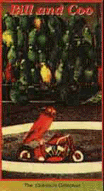
Timothy Walter Burton is an American film director, producer, screenwriter, and animator. Known for popularizing Goth culture in the American film industry, Burton is famous for his gothic horror and fantasy films. He has received numerous accolades including an Emmy Award as well as nominations for two Academy Awards, a Golden Globe Award and three BAFTA Awards. He was honored with the Venice International Film Festival's Golden Lion for Lifetime Achievement in 2007 and was given the Order of the Arts and Letters by Culture Minister of France in 2010.
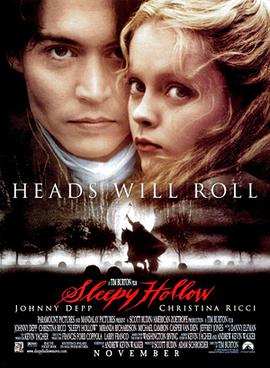
Sleepy Hollow is a 1999 gothic supernatural horror film directed by Tim Burton. It is a film adaptation loosely based on Washington Irving's 1820 short story "The Legend of Sleepy Hollow", and stars Johnny Depp and Christina Ricci, with Miranda Richardson, Michael Gambon, Casper Van Dien, Christopher Lee, and Jeffrey Jones in supporting roles. The plot follows police constable Ichabod Crane (Depp) sent from New York City to investigate a series of murders in the village of Sleepy Hollow by a mysterious Headless Horseman.
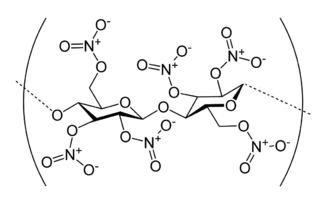
Nitrocellulose is a highly flammable compound formed by nitrating cellulose through exposure to a mixture of nitric acid and sulfuric acid. One of its first major uses was as guncotton, a replacement for gunpowder as propellant in firearms. It was also used to replace gunpowder as a low-order explosive in mining and other applications. In the form of collodion it was also a critical component in an early photographic emulsion, the use of which revolutionized photography in the 1860s. In the 20th century it was adapted to automobile lacquer and adhesives.

Dumbo is a 1941 American animated fantasy drama film produced by Walt Disney Productions and released by RKO Radio Pictures. The film is based upon the storyline written by Helen Aberson and Harold Pearl, and illustrated by Helen Durney for the prototype of a novelty toy ("Roll-a-Book").

Terence Henry Stamp is an English actor. Known for his sophisticated villain roles, he was named by Empire as one of the 100 Sexiest Film Stars of All Time in 1995. He has received various accolades including a Golden Globe Award, a Cannes Film Festival Award, and a Silver Bear as well as nominations for an Academy Award and two BAFTA Awards.
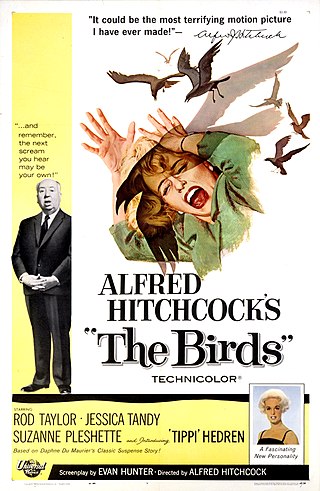
The Birds is a 1963 American natural horror-thriller film produced and directed by Alfred Hitchcock, released by Universal Pictures and starring Jessica Tandy, Rod Taylor, Suzanne Pleshette, and introducing Tippi Hedren in her film debut. Loosely based on the 1952 short story of the same name by Daphne du Maurier, it focuses on a series of sudden and unexplained violent bird attacks on the people of Bodega Bay, California, over the course of a few days. The screenplay is by Evan Hunter, who was told by Hitchcock to develop new characters and a more elaborate plot while keeping du Maurier's title and concept of unexplained bird attacks.

Film preservation, or film restoration, describes a series of ongoing efforts among film historians, archivists, museums, cinematheques, and non-profit organizations to rescue decaying film stock and preserve the images they contain. In the widest sense, preservation assures that a movie will continue to exist in as close to its original form as possible.

Rankin/Bass Animated Entertainment was an American production company located in New York City. It was known for its seasonal television specials, usually done in stop motion animation. Rankin/Bass's stop-motion productions are recognizable by their visual style of doll-like characters with spheroid body parts and ubiquitous powdery snow using an animation technique called Animagic.

The CooCoo Nut Grove is a 1936 Warner Bros. Merrie Melodies short animated film, set in the famed Cocoanut Grove of the Ambassador Hotel in Los Angeles. This is a caricature cartoon, with recreations of celebrities from the time. The cartoon was directed by Friz Freleng, with animation by Robert McKimson and Sandy Walker, caricature design by T. Hee, and musical score by Carl Stalling. The short was released on November 28, 1936.

The Crow is a supernatural superhero comic book series created by James O'Barr revolving around the titular character of the same name. The series, which was originally created by O'Barr as a means of dealing with the death of his fiancée at the hands of a drunk driver, was first published by Caliber Comics in 1989. It became an underground success and was later adapted into a film of the same name in 1994. It was followed by three standalone sequels and a television series. A second adaptation was released in 2024. Numerous books and comic books have also been produced, albeit published by various different companies.
Preservation of documents, pictures, recordings, digital content, etc., is a major aspect of archival science. It is also an important consideration for people who are creating time capsules, family history, historical documents, scrapbooks and family trees. Common storage media are not permanent, and there are few reliable methods of preserving documents and pictures for the future.

Dennis the Menace is a 1993 American comedy film based on the Hank Ketcham comic strip. It is directed by Nick Castle, written and co-produced by John Hughes and distributed by Warner Bros. under its Family Entertainment label.
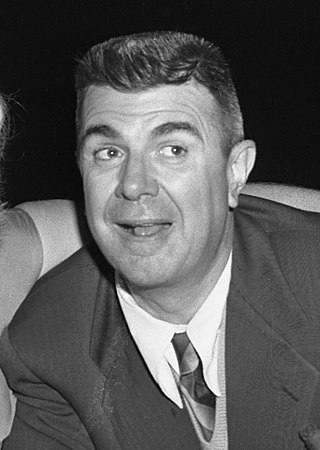
Ken Murray was an American comedian, actor, radio and television personality and author.
A film base is a transparent substrate which acts as a support medium for the photosensitive emulsion that lies atop it. Despite the numerous layers and coatings associated with the emulsion layer, the base generally accounts for the vast majority of the thickness of any given film stock. Since the late 19th century, there have been three major types of film base in use: nitrate, acetate, and polyester.

Dean Riesner was an American film and television writer.
Willie D. Burton is an American production sound mixer. His career has spanned five decades and has included films such as The Shawshank Redemption, Se7en, and Indiana Jones and the Last Crusade. Burton has been nominated for the Academy Award for Best Sound or Best Achievement in Sound Mixing a total of seven times, winning twice; he has been nominated for two BAFTA Film Awards for Best Sound, winning once; and he was nominated for one Emmy Award for Outstanding Achievement in Film Sound Mixing for his work on Roots.

Who's Afraid of Virginia Woolf? is a 1966 American drama film directed by Mike Nichols in his directorial debut. The screenplay by Ernest Lehman is an adaptation of Edward Albee's 1962 play of the same name. It stars Elizabeth Taylor as Martha, Richard Burton as George, George Segal as Nick, and Sandy Dennis as Honey. The film depicts a late-night gathering at the home of a college professor and his wife.

The rook is a member of the family Corvidae in the passerine order of birds. It is found in the Palearctic, its range extending from Scandinavia and western Europe to eastern Siberia. It is a large, gregarious, black-feathered bird, distinguished from similar species by the whitish featherless area on the face. Rooks nest collectively in the tops of tall trees, often close to farms or villages; the groups of nests are known as rookeries.

Frankenweenie is a 2012 American gothic 3D stop-motion animated science fiction horror comedy film directed by Tim Burton, written by John August, and starring Catherine O'Hara, Martin Short, Martin Landau, Charlie Tahan, Atticus Shaffer, and Winona Ryder. A co-production between Walt Disney Pictures and Tim Burton Productions, it is a feature-length remake of Disney and Burton's 1984 short film of the same name, and is also both a parody of and homage to the 1931 film Frankenstein, based on Mary Shelley's 1818 book Frankenstein; or, The Modern Prometheus. The film follows a boy named Victor Frankenstein who uses the power of electricity to resurrect his dead Bull Terrier, Sparky, but his peers discover what he has done and reanimate their own deceased pets and other creatures, resulting in mayhem.
The conservation and restoration of film is the physical care and treatment of film-based materials. These include photographic film and motion picture film stock.
